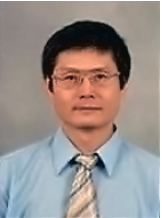Ultrahigh Resolution Optical Measurement and Micro/Nanofluidic Lab-on-a-Chip
Guiren Wang
Department of Mechanical Engineering and Biomedical Engineering Program. University of South Carolina, Columbia, South Carolina, USA
报告时间:2013年11月29日 15:00—16:30
报告地点:玉泉校区 教三 338
Abstract: As a multidisciplinary and new field, micro/nanofluidics based lab-on-a-chip is attracting interests of many scientists and engineers from various areas. In order to develop novel microfluidic device, some fundamental issues in fluid dynamics have to be addressed. Here we introduce some novel observation on the possibility of achieving turbulent flow to enhance transport phenomena (e.g. mixing) in microfluidics with Reynolds number just on the order of one. By developing a new method, i.e. Laser Induced Fluorescence Photobleaching Anemometer, we are now able to measure turbulence in microfluidics with ultrahigh spatiotemporal resolution. Combining progress in modern nanophotonics, i.e. Stimulated emission Depletion (STED), we are developing a new nanovelocimeter that could enable us to measure slip flow within 100 nm from wall, a classic unsolved issue in fluid mechanics, which becomes important and cannot be ignored for nanofluidics. We also use STED for nanofabrication of nanostructures to overcome diffraction limit in photolithography. Finally we also introduce our microfliudic cell sorter based on dielectrophoresis for cancer cell separation.
 Dr. Wang is currently an Associate Professor in the Department of Mechanical Engineering and Biomedical Engineering Program, University of South Carolina, Columbia, South Carolina, USA. Dr. Wang received his PhD. from Technische Universität Berlin. He was a postdoctoral research fellow in Stanford University. Dr. Wang received Career Award from National Science Foundation (NSF), North American Mixing Forum and Rising Star from the University of South Carolina. As the Principal Investigator, he received the grant from NSF for Major Research Instrumentation. Currently his research interests include nano/microfluidics and biochip, early cancer detection, super-resolution far field nanoscopy based on Stimulated Emission Depletion (STED), nano/microfabrication, fluorescence detection, turbulent and mixing, etc.
Dr. Wang is currently an Associate Professor in the Department of Mechanical Engineering and Biomedical Engineering Program, University of South Carolina, Columbia, South Carolina, USA. Dr. Wang received his PhD. from Technische Universität Berlin. He was a postdoctoral research fellow in Stanford University. Dr. Wang received Career Award from National Science Foundation (NSF), North American Mixing Forum and Rising Star from the University of South Carolina. As the Principal Investigator, he received the grant from NSF for Major Research Instrumentation. Currently his research interests include nano/microfluidics and biochip, early cancer detection, super-resolution far field nanoscopy based on Stimulated Emission Depletion (STED), nano/microfabrication, fluorescence detection, turbulent and mixing, etc.






